Every year, Football Outsiders puts together a list of the NFL's best and brightest young players who have barely played. Eighty percent of the draft-day discussion is about first-round picks, and 10 percent is about the players that should have been first-round picks, but instead went in the second round.
This list is about the others. Everybody knows that Marcus Mariota and Myles Garrett are good. There's a cottage industry around the idea of hyping every draft's No. 1 quarterback as a potential superstar. This is a list of players that have a strong chance to make an impact in the NFL despite their lack of draft stock and the fact that they weren't immediate NFL starters. (Our full criteria for who's eligible for this list is at the bottom of this article.)
Previous instances of the list have hyped players such as Geno Atkins, Elvis Dumervil, Malcolm Butler and Jamaal Charles before they blew up. Last year's list included David Johnson, Danielle Hunter and Super Bowl star Grady Jarrett.
This year, there weren't any prospects head-and-shoulders above the rest of the crew, like we've seen in past instances. Last year, for example, David Johnson was an easy top prospect. We actually had to have a bit of a debate to settle on the top of the list.
Here are the top 25 breakout prospects for 2017:
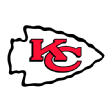
1. Tyreek Hill, WR, Kansas City Chiefs
Age: 23 | 418 offensive snaps | Fifth-round pick (2016)
Most famous for being involved in one of the NFL's myriad domestic violence cases, Hill was drafted in the fifth round by the Chiefs because he's simply too fast to ignore. Oklahoma State dismissed him from the team after he was arrested for reportedly assaulting his pregnant girlfriend, and he ended up at Division II West Alabama. Hill reportedly ran a 4.24 40-yard dash at his pro day, which is no surprise for a high school track All-American.
At first, Hill was just a special teams maven, but with injuries to Jamaal Charles and Jeremy Maclin sapping their speed, the Chiefs began to turn to him more in their horizontal passing game. With Maclin now a Raven, Hill enters 2017 as the Chiefs' No. 1 option in the passing game. The doubters will point to a small sample size of snaps in which he actually played wide receiver, but he impressed in the ones in which he did, breaking press coverage repeatedly. Maybe he's only a speedy gadget receiver. Or, maybe he's Antonio Brown.

2. Austin Hooper, TE, Atlanta Falcons
Age: 22 | 405 offensive snaps | Third-round pick (2016)
Hooper came out of Stanford with a pedigree as a great blocking tight end, but he wasn't utilized much in the passing game by the Cardinal, with only 34 targets his junior season. However, outside evaluators such as Matt Waldman of the Rookie Scouting Portfolio loved what they saw of Hooper. He tested well, and also looked the part on the field.
Hooper had a 47.1 percent receiving DVOA in his rookie year for the Falcons. Granted, some of that came because Kyle Shanahan's second tight ends often get a lot of leeway to make big plays. But with no ball-dominant second option in the Atlanta passing game, and Jacob Tamme gone, Hooper could make the leap this year and become a true TE1 for fantasy football purposes.

3. Javon Hargrave, DT, Pittsburgh Steelers
Age: 24 | 492 defensive snaps | Third-round pick (2016)
Hargrave combines impressive burst inside with advanced hand technique, and the only reason he was still around this late in the draft was that he played at South Carolina State. He ranked third in sacks at the FCS level, with 16, while playing defensive tackle.
For the Steelers, who are usually pretty conservative bringing rookies along, Hargrave earned a lion's share of the snaps at nose tackle last season. Much as Grady Jarrett has been for Atlanta, we expect Hargrave to eventually be a run-down dominator with a chance to play a little on passing downs as well. Although Pittsburgh's run defense was a bit up-and-down in 2016, that was more about injuries to Ryan Shazier and Cameron Heyward than Hargrave's play.
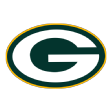
4. Brett Hundley, QB, Green Bay Packers
Age: 24 | 22 offensive snaps | Fifth-round pick (2015)
The story on Hundley hasn't changed much from last year. He's still an incredibly athletic quarterback who was ruined at UCLA by a bad offensive system and a lack of supporting weapons. Hundley saw limited playing time last preseason because of an ankle injury, and limited playing time last season because he is behind Aaron Rodgers.
We've started to see some talk about Hundley's trade value, though the Packers aren't typically a team that leaks a ton to the media. With two years left on his rookie deal, the time to strike probably would've been this offseason. If only he were as tall and dreamy as Mike Glennon, then maybe someone would've spent actual draft-pick value to get him.
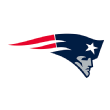
5. Elandon Roberts, LB, New England Patriots
Age: 23 | 270 defensive snaps | Sixth-round pick (2016)
A big reason why Jamie Collins was traded to the Browns was the quick development of Roberts, who started sliding into Bill Belichick's defensive packages sooner than anticipated. Roberts didn't time or test well in the pre-draft process, but he was highly regarded at Houston as both a leader and a playmaker after he helped lead the Cougars back to national prominence. He reeled off 19 tackles for loss and six sacks, along with five passes defensed in 14 games.
With the Patriots, Roberts' average gain on his run tackles was just 2.7 yards, which is a low number for an off-ball linebacker. He's a downhill player who is at his best when being aggressive right off the snap. Although his timed speed (4.60 40-yard dash) wasn't impressive for a player his size, he plays faster than that. Roberts lost playing time to Kyle Van Noy down the stretch, but still profiles to develop into a three-down linebacker.

6. C.J. Prosise, RB, Seattle Seahawks
Age: 23 | 147 offensive snaps | Third-round pick (2016)
How could you watch last year's New England-Seattle "Sunday Night Football" game and not think that Prosise has a chance to be a star? He dominated out of the backfield as a receiver in ways few current non-David Johnson backs do. And this makes perfect sense, as Prosise was a converted receiver playing running back at Notre Dame.
The only question at this point is how good he can be as a traditional running back. Prosise has some skill to read blocks, but he often tried to press the hole a bit too early for the Fighting Irish. In theory, all the talent is here for Prosise to be a three-down back. Seattle has covered him up with Eddie Lacy and Thomas Rawls, so there's not much fantasy value to be had. But even becoming the next Shane Vereen in an NFL world where Theo Riddick is becoming a household name is a big feat.

7. Michael Pierce, DE, Baltimore Ravens
Age: 24 | 375 defensive snaps | Undrafted (2016)
Coming out of Samford, here's how well-known Pierce was: He has no NFL.com draft profile, and ESPN's page of his traits returns only "N/As." At his pro day, Pierce ran a 4.98 40-yard-dash. That might not sound like much, but there aren't many 320-plus-pounders with that kind of speed. His production was weak in college (3.5 sacks in 47 games), but there was definitely something to work with. The Ravens quickly scooped him up after the draft.
As a rookie, Pierce picked up two sacks and nine hurries in limited time, while also destroying running games to the tune of a 94 percent stop rate on 33 runs. There's some concern over whether he's an actual pass-rusher or not, but he definitely showed enough for Baltimore to take a longer look at him in their passing-down fronts. It's not very often a player with these traits slips through the draft cracks. Baltimore is reaping the rewards for finding him.

8. Andrew Billings, DT, Cincinnati Bengals
Age: 21 | 0 defensive snaps | Fourth-round pick (2016)
After missing 2016 with a knee injury, Billings heads into training camp as the presumed starting nose tackle for the Bengals. He was a hell of a prospect, with elite strength and nimble feet at Baylor, where he was the co-Big 12 Defensive Player of the Year at 20 years old. He racked up 26.5 tackles for loss in his last two years of college.
The question with Billings remains: Is he a nose tackle, or is he more? Nose tackles don't have a ton of value in today's NFL, and the reason he slipped to the fourth round is because scouts looked at his body and saw a two-down player. The upside for Billings' skill set is to become Star Lotulelei, with the speed and power to win in any gap and be a factor on pass-rushing downs.

9. Nick Vigil, LB, Cincinnati Bengals
Age: 24 | 111 defensive snaps | Third-round pick (2016)
Another of the Bengal Babies who are getting their first real chance this year, Vigil tested out highly at the combine as a line-of-scrimmage defender. Vigil's short shuttle and three-cone drill times were both in the top 10 percent of all inside linebackers over the past 18 years. His NFL.com draft profile includes this in weaknesses: "Instincts make him seem more athletic and fast than he might actually be." Sign us up for that weakness.
The question with Vigil will be the muscle he's able to add to his frame, and what it does to his speed. He was a mere 230 pounds at the combine. A best-case athletic scenario might be something like Kiko Alonso with the Bills before the injuries wrecked his career. After a successful cup of coffee in 2016, Vigil was dubbed "much better" by defensive coordinator Paul Guenther in organized team activities, and should be in line for a big role in 2017.

10. Owamagbe Odighizuwa, EDGE, New York Giants
Age: 25 | 396 defensive snaps | Third-round pick (2015)
It was widely reported that Odighizuwa had considered quitting football this offseason, taking some time away from the Giants before showing up to OTAs. It's hard to really find a way to quantify that into our ranking process. Either you believe in the talent, or you don't. The truth of the matter is that Odighizuwa has been hosed by the Giants, who signed Olivier Vernon and Damon Harrison to keep him from really seeing the field.
But that takes nothing away from Odighizuwa's talent; he has shined every time he has been on the field. Our pre-draft metrics would have loved him, provided UCLA hadn't hidden him at end in a 3-4 defense. All Odighizuwa needs is a chance to play. If you believe in the college tape, it's insulting that he hasn't been given the chance yet. If you look at the reality of the situation, in which the Giants brought in Devin Taylor this offseason, Odighizuwa might not get the chance.

11. Jonathan Bullard, DT, Chicago Bears
Age: 23 | 297 defensive snaps | Third-round pick (2016)
Tabbed for this list the instant the draft ended in 2016, the Bears have instead done everything they could to make it appear that Bullard's value is down. Bullard tested like a star tackle, and some thought he should be playing end. SackSEER believed the former, calling for a more modest 12.1 sacks over the first five years of his career as projected at end. But even if you liked Bullard as a Geno Atkins-esque 3-technique, he was still perceived as a hot commodity in the 2016 draft.
So naturally, he received fewer snaps than known mediocrities Mitch Unrein and Cornelius Washington last year, and notched just one sack and four hurries in his small sample size. Defensive coordinator Vic Fangio told the Chicago Sun-Times, "I don't think he was quite ready for that last year, both physically or mentally." That's a pretty damning quote. The opportunity is here. The talent should be here. But whereas we might have slotted him in the top 10 if he were eligible for our list before last season, we're less sure about him now.

12. Terrance Mitchell, CB, Kansas City Chiefs
Age: 25 | 239 defensive snaps | Undrafted (2014)
Mitchell had a huge half-year as the Chiefs stopped the bleeding next to Marcus Peters down the stretch. Targeted in an obscene 30 percent of his snaps after joining the starting lineup, Mitchell had a 57 percent success rate and allowed an average of just 4.9 adjusted yards per attempt. He added eight defensed passes.
As a prospect, Mitchell has been on the radar for a bit, but never had a real opportunity. He spent time on the Bears' active roster in 2014, but has also served two stints with the Cowboys, and one with the Texans last offseason before getting claimed by the Chiefs at final cuts. Mitchell had horrendous tested deep speed, with a 4.63 40-yard-dash that put him in the 11th percentile of all drafted cornerbacks since 1999. He was regarded as a mid-round prospect coming out of Oregon by most draftniks, but went undrafted in part due to a torn pectoral muscle. We at FO have seen a lot of small sample-size success seasons by cornerbacks in our day, so we're wary that Mitchell is suddenly a star. But on paper, it all seems to make sense that he could become a solid No. 2 corner.

13. Paul Perkins, RB, New York Giants
Age: 22 | 289 offensive snaps | Fifth-round pick (2016)
Perkins has a couple of major gifts on his side. He has the Marshawn Lynch-esque ability to stop and start while evading defenders. He has the elusiveness to be a consistent between-the-tackles runner despite a lack of true burn-you speed down the field. In a lot of ways, his strengths set him up to be the next Devonta Freeman, another successful graduate from this list.
However, Perkins did not test anything like Freeman at the combine. In fact, his combine was pretty disappointing, as he managed a pedestrian 4.54 40-yard dash at 208 pounds. His pedestrian pass protection coming out of UCLA also helped him fall to the fifth round. He also has to overcome the inherent inertia of the Giants' running back depth chart. Wayne Gallman is a higher-round pick than Perkins, while a healthy Shane Vereen offers more in the passing game and Orleans Darkwa seems to get 50 carries per year no matter what else happens. Perkins is a compelling talent, but there are reasons to doubt that he's a three-down back at this point.

14. Parker Ehinger, G, Kansas City Chiefs
Age: 24 | 229 offensive snaps | Fourth-round pick (2016)
Ehinger likely would have played his way right off this list had he not torn his ACL soon after ascending to the starting job. Considered a bit of a tweener at tackle after playing there at Cincinnati, the Chiefs immediately moved Ehinger to guard, where we have him with just five blown blocks in his small sample last year.
Ehinger is not expected to be full-go at training camp, but as soon as he is ready to go, the Chiefs should find themselves with a functional-to-good guard with near-tackle agility. If Ehinger can develop a little more power, he could be a star.

15. D.J. Reader, DT, Houston Texans
Age: 23 | 404 defensive snaps | Fifth-round pick (2016)
Unlike the other nose tackles on the list, there's not much doubt that Reader isn't a three-down lineman. He's a pure run-plugger, but he did that job well in his first season as Vince Wilfork's understudy. Now with Wilfork retired and the Texans without much else at the position, Reader should be a starter this year. His 90 percent stop rate on 20 runs last year shows promise.
In putting this list together though, we have an obvious bias toward passing-game players. We think Reader is a terrific prospect at nose tackle, and might have even put him above some of the players ahead of him if we were ranking players just on their floors. But there's only so much value a run-only player can have in a pass-first league.

16. P.J. Williams, CB, New Orleans Saints
Age: 24 | 82 defensive snaps | Third-round pick (2015)
Williams has the size and talent to be a strong boundary corner. Williams is a physical freak, with video of a 60-inch box jump that went viral as he was coming out of the draft. The only thing that has held back his ascension is his early-career injury history. A torn hamstring ended his 2015 season before it began, and a severe concussion cut his 2016 season short after just a handful of snaps.
Williams still has a huge opportunity for playing time, even with Marshon Lattimore on the team, but this is probably his last real chance to impress the Saints. Another year on the sideline would make it extremely hard for an NFL team to count on him. And while his upside is higher than some players ahead of him on the list, we have to measure that against the chance that he never plays another NFL snap.
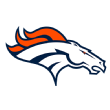
17. A.J. Derby, TE, Denver Broncos
Age: 25 | 191 offensive snaps | Fifth-round pick (2015)
Derby had the size, speed and skill to be a star college tight end, but resisted the change for many years, even transferring from Iowa to Arkansas to try to stay at quarterback. Without much statistical track record, and coming out of college with an injury that caused him to miss his bowl game and most of the combine, it was a surprise that he was actually drafted. But under the watchful eye of Bill Belichick, Derby blossomed to the point that the Patriots were able to deal him to Denver and recoup their initial investment.
Given the lack of a real established tight end in Denver, Derby doesn't have much to beat out to see playing time. He's certainly the best receiving option the Broncos have at the position. New offensive coordinator Mike McCoy's tenure with the Chargers heavily emphasized tight ends, and while Derby is no Antonio Gates, he should see a little more involvement than he did last year.

18. Justin Simmons, S, Denver Broncos
Age: 23 | 296 defensive snaps | Third-round pick (2016)
Simmons got some experience last year while T.J. Ward was out, and is probably the free safety of the future in Denver. Simmons showed off his range at the combine by posting 97th percentile scores in the 20-yard shuttle and 60-yard shuttle. His lanky frame makes him somewhat awkward as an NFL tackler, and scouts also dinged his single-high safety instincts coming out of Boston College.
However, that range will play anywhere. The question is just where he'll be most effective in Denver, with Ward and Darian Stewart both coming up on the end of their useful shelf life. He probably fits best as a single-high safety from a pure athletic standpoint. It's the development of his instincts and reads that will ultimately determine the right spot for him.
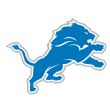
19. Miles Killebrew, S, Detroit Lions
Age: 24 | 149 defensive snaps | Fourth-round pick (2016)
A rangy, hard-hitting safety in the Deone Bucannon "safety who is really a linebacker" mold, Killebrew projects to see plenty of time in Detroit's secondary going forward. Glover Quin is getting closer to 30, and under Teryl Austin, the Lions have been open to dime defenses, going with them 18 percent of the time in 2016.
Killebrew's 40-yard dash at the combine was brutal, with a 4.65-second time that put him in the bottom 20 percent of all safeties since 1999. However, his jumps were explosive and once he got up to top speed he managed pretty well at Southern Utah. It's all projection this deep on the list, but Killebrew has the tools to be an NFL moneybacker.

20. B.J. Finney, G/C, Pittsburgh Steelers
Age: 25 | 300 offensive snaps | Undrafted (2015)
Finney was a reserve lineman for the Steelers in 2016, after spending most of 2015 on the practice squad. The Kansas State lineman was heavily decorated for Bill Snyder's Wildcats, a Remington Trophy finalist in 2014 and a first-team All-Big 12 center. He has the wrestling background that has come to define inside maulers such as former Patriot Stephen Neal. Scouts were worried about his quickness in college, and his short arms didn't do him any favors with front offices.
But when put on the spot in relief of Ramon Foster, Finney quietly did an excellent job last year. He helped key the Steelers in their dominant win over the Chiefs and wasn't anywhere near as overmatched against the Eagles as the right side of the offensive line. Maybe he isn't the next Andrew Norwell -- the Panthers guard who went from undrafted free agent to star -- but he has all the tools to be a good drive blocker.

21. Cody Kessler, QB, Cleveland Browns
Age: 24 | 349 offensive snaps | Third-round pick (2016)
Kessler was never drafted with the expectation that he could be a star quarterback, but he has a lot of the traits that can keep a quarterback in the league for a long time. He's fairly accurate underneath, he makes good decisions with the ball, and he's got the bulk to take the NFL beating. His major downsides are that he's 6-foot-1 and that he lacks NFL arm strength.
Still, Matt Flynn has that same package and was in the league for how many years? With a -7.5 percent DVOA last year, Kessler was essentially a league-average passer in a bad offense. He was benched for a reason, and there's no reason to hold a banquet in his honor for not being the worst player on the Browns. But Kessler could absolutely be a solid backup quarterback or Brian Hoyer type of player. This league literally has some team start Josh McCown every year, so that's how low the bar is.

22. Kenneth Dixon, RB, Baltimore Ravens
Age: 23 | 258 offensive snaps | Fifth-round pick (2016)
Dixon missed the first four weeks of last season and came back without much burst as he tried to recover from a preseason MCL tear. Now Dixon will miss the upcoming season with a meniscus tear. Yet, the final six weeks of last season show a ton of promise: he's absolutely the most talented running back on the Ravens' roster, whether they believe it or not.
It's hard to understand how Dixon made it to the fifth round. Wildly productive, he held the career FBS touchdown record for a few days at the end of his senior season, before Keenan Reynolds snagged it back. He was first-team all-conference as a freshman at Louisiana Tech. He's a great receiver out of the backfield. He doesn't go down on first contact, and he gets the most out of every run. With the constant injuries, it's easy to see the Ravens washing their hands of Dixon as a starting back. But based on talent alone, he should be the lynchpin of their offense in 2018.

23. Tyler Higbee, TE, Los Angeles Rams
Age: 24 | 405 offensive snaps | Fo urth-round pick (2016)
Higbee's first year with the Rams was spent doing his best Bo Scaife impersonation for Jeff Fisher's dying offense. He finished with the worst DYAR of any qualifying tight end in the league, generating minus-109 on just 29 passes while Jared Goff sailed them all over his head. That number, in that sample size, is essentially meaningless. But it does show you how lost the Rams were.
Higbee arrived at Western Kentucky as a 190-pound wideout and built himself into a 250-pound tight end. He maintained a lot of the wideout agility, too, which showed at the college level. New head coach Sean McVay has gotten terrific seasons out of Niles Paul and Jordan Reed, and Higbee certainly has the talent to hang with Paul's best seasons. Whether McVay lets that happen rather than turning rookie Gerald Everett into the focal point at the position is an open question.

24. Rashard Higgins, WR, Cleveland Browns
Age: 22 | 183 offensive snaps | Fifth-round pick (2016)
The death blow for an outside player's draft stock is a 4.64 40-yard dash at the combine. Higgins had a high rating in our Playmaker Score metric, at 89.5 percent. He had a similar projection to what Antonio Brown would have had ... and what Dez White would have had. You can see the hit-or-miss nature of small-school wideout projection.
The lackluster 40 time outshines the real problem with Higgins: He's a technically skilled, smart receiver, but he lacks a high ceiling because there's no physical upside here. Higgins is never going to post up against a press-outside corner like Dez Bryant can. There's not a lot in front of him on the depth chart in Cleveland, where Kenny Britt and Corey Coleman are joined by a deluge of younger receivers. But Higgins may need to take another step to be more than a solid underneath threat.

25. AJ McCarron, QB, Cincinnati Bengals
Age: 26 | 259 offensive snaps | Fourth-round pick (2014)
McCarron didn't exactly set the world on fire in his small sample with the Bengals, but adequate quarterbacking is worth something. McCarron's statistics, including a 6.9 percent DVOA on 132 dropbacks, were heavily influenced by a great supporting cast. Whenever McCarron gets his chance, you can expect some adequate game-manager type play. Nothing inspiring or worthy of a thinkpiece, but every era needs its Jon Kitna.
McCarron is in a bit of an interesting dispute with the Bengals, who don't want his 2014 season to count as an accrued year for the purposes of free agency. Assuming this is just wishful thinking, McCarron may find himself as the next winner of the Brock Osweiler/Mike Glennon Enormous Contract Award. The only real problem with that idea is that those guys had big arms, and McCarron has never had that.
Honorable mention
QB Vernon Adams, Montreal Alouettes (Yes, we know the Alouettes are a CFL team, but we believe in Adams as a long-term prospect)
EDGE Ronald Blair, San Francisco 49ers
CB Kendall Fuller, Washington Redskins
WR Roger Lewis, New York Giants
QB Cardale Jones, Los Angeles Chargers
RB Robert Kelley, Washington Redskins
EDGE Dean Lowry, Green Bay Packers
RB Jalen Richard, Oakland Raiders
RB Dwayne Washington, Detroit Lions
G Christian Westerman, Cincinnati Bengals
Methodology
This is the 11th anniversary of the list. We're still relying on the same things we always do: scouting, statistics, measurables, context, expected role and what we hear from other sources. The goal is to bring your attention to players who are still developing in their second and third seasons, even after the draftniks have forgotten them. It's important to note that this list is not strictly about fantasy football (otherwise, there wouldn't be offensive linemen on it) and it's about career potential, not just the 2017 season (otherwise, there wouldn't be backup quarterbacks on it).
Here's our full criteria:
Drafted in the third round or later, or signed as an undrafted free agent
Entered the NFL between 2014 and 2016
Fewer than 500 career offensive or defensive snaps
Have not signed a contract extension (players who have bounced around the league looking for the right spot, however, still qualify for the list)
Age 26 or younger in 2017
You'll see a number of references to Football Outsiders stats on our list, in particular DVOA (Defense-adjusted Value Over Average), which takes every play and compares its success to the NFL average based on situation and opponent, and DYAR (Defense-adjusted Yards Above Replacement), which gives total value by comparing efficiency on each play to a replacement-level player. You can read more about those and other FO stats on this page. Many of the other stats come from Sports Info Solutions and can be found in our new book, Football Outsiders Almanac 2017.
